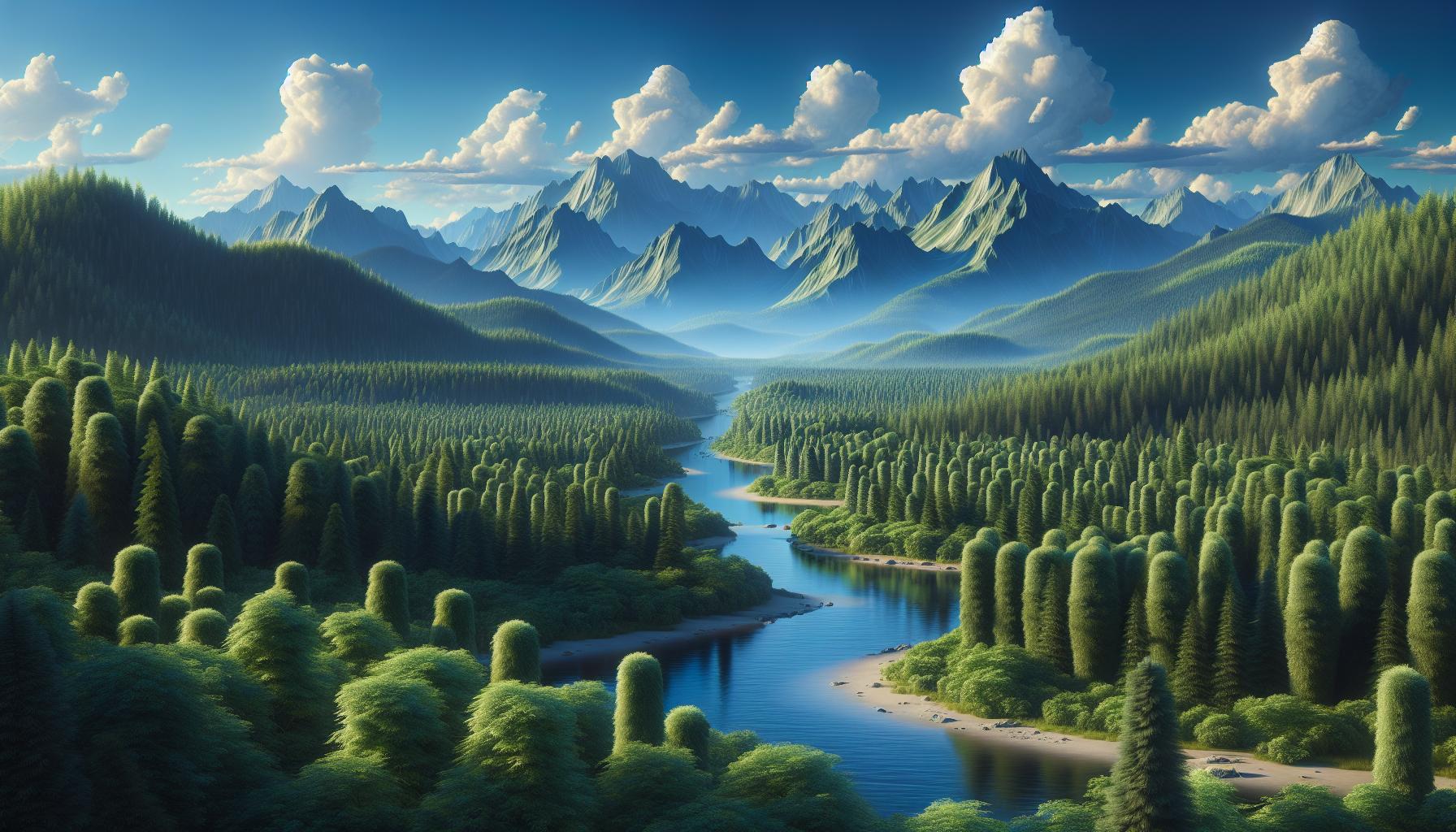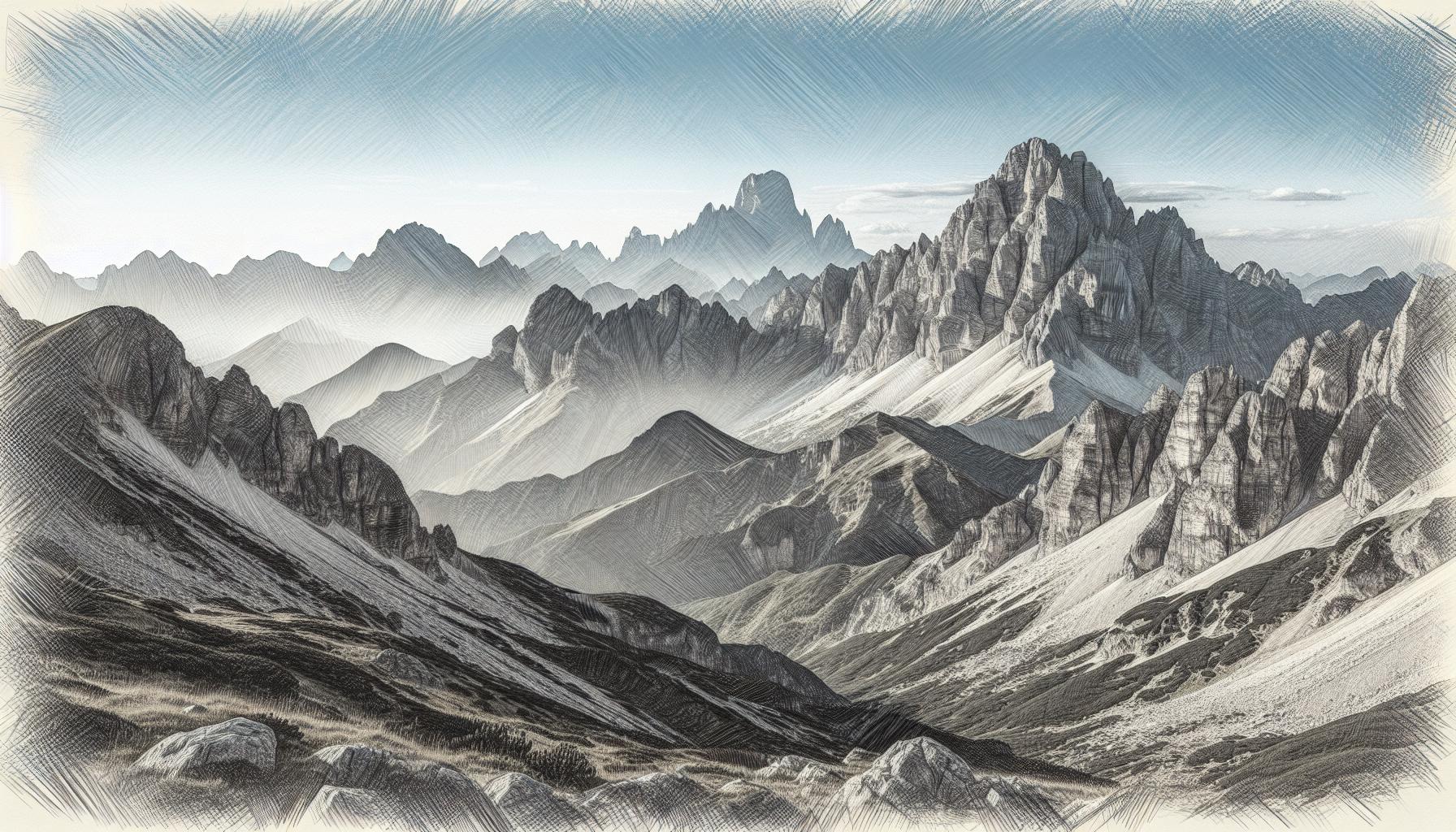Drawing landscapes doesn’t have to be intimidating – even beginners can create beautiful scenery with the right techniques and guidance. From rolling hills to serene beaches these simple landscape drawings help artists develop their skills while having fun.
Nature provides endless inspiration for artists looking to explore drawing landscapes. Whether someone’s dreaming of misty mountains peaceful lakes or dramatic coastlines they’ll find that breaking down complex scenes into basic shapes makes landscape art approachable. With just a few basic supplies and step-by-step instructions anyone can start bringing these picturesque views to life on paper.
Facil:9gtbeqqphou= Paisajes Para Dibujar
Creating landscape art starts with gathering the right materials. Here’s a comprehensive guide to the essential tools and materials for drawing landscapes.
Basic Tools for Beginners
A starter kit for landscape drawing includes:
- HB pencils for initial sketches
- 2B to 6B graphite pencils for shading depth
- White plastic eraser for clean corrections
- Kneaded eraser for lifting highlights
- Pencil sharpener with dual holes
- Drawing board for stable support
- Blending stumps for smooth transitions
- Basic ruler for straight lines
- Portable sketchbook for outdoor practice
Recommended Paper Types
Quality paper enhances landscape artwork through specific characteristics:
- Bristol paper (smooth) for detailed work
- Cold-pressed watercolor paper for texture
- Sketch paper (90-100 lb) for practice drawings
- Toned paper for dramatic light effects
- Mixed media paper for various techniques
- Charcoal paper for darker mediums
| Paper Weight | Best Use |
|---|---|
| 70 lb | Practice sketches |
| 90 lb | Finished pencil drawings |
| 140 lb | Mixed media artwork |
| 300 lb | Heavy layering techniques |
Simple Landscape Drawing Techniques

Simple landscape drawing techniques transform complex outdoor scenes into manageable elements through fundamental artistic principles. These methods enable artists to capture natural beauty with confidence.
Creating Basic Shapes and Lines
Basic geometric shapes form the foundation of landscape drawing. Mountains emerge from triangles, clouds develop from circles, and trees start as simple cylinders. Artists break down complex landscape elements into combinations of squares, circles, triangles, and rectangles to establish initial compositions. A shoreline begins as a curved line, while a forest starts as a series of overlapping cylindrical shapes. The layering of these basic forms creates depth and structure in the artwork. Texture develops through the addition of organic lines and varied mark-making techniques. Light strokes indicate distant elements while darker, more defined shapes establish the foreground.
Understanding Perspective
Perspective in landscape drawing creates depth through size relationships and positioning. Objects appear larger in the foreground and gradually diminish toward the horizon line. The placement of elements follows one-point or two-point perspective rules to establish spatial relationships. Artists position larger objects at the bottom of the composition, decreasing their size as they move upward. Overlapping shapes reinforce depth perception by showing which elements lie in front of others. Atmospheric perspective adds realism through lighter values and less detail in distant objects. Mountains in the background appear lighter and less detailed than trees in the foreground. The horizon line serves as a reference point for maintaining proper scale relationships throughout the composition.
Step-by-Step Mountain Landscape Tutorial

Drawing mountain landscapes starts with identifying basic shapes in the composition. This tutorial breaks down the process of creating a realistic mountain scene into manageable steps.
Adding Texture and Shading
Mountain textures emerge through strategic pencil strokes that follow the natural formations of rock faces. Light diagonal strokes create rough surfaces while circular motions form smoother areas of weathered stone. Varied pressure applications produce sharp edges along ridgelines contrasting with softer shadows in valleys. Cross-hatching techniques add depth to rocky outcrops using intersecting lines at 45-degree angles. Blending stumps smooth transitions between light peaks catching sunlight into darker crevices filled with shadows. Small irregular dots scattered across surfaces replicate the appearance of scattered rocks debris.
Creating Depth and Distance
Atmospheric perspective transforms flat mountain drawings into three-dimensional landscapes. Distant peaks appear lighter with less detail while foreground mountains showcase darker values with crisp edges. Overlapping ridgelines establish spatial relationships between different mountain layers. Each successive mountain range uses progressively lighter pressure to create the illusion of atmospheric haze. Value contrast diminishes in background elements while maintaining sharp detail in foreground rocks. Strategic placement of darker shadows beneath overhangs reinforces depth perception throughout the composition.
Drawing Natural Elements

Natural elements form the foundation of landscape drawings, requiring specific techniques to capture their organic shapes and textures. Each element presents unique characteristics that create depth and realism in landscape compositions.
Trees and Vegetation
Trees feature distinct shapes based on their species, with deciduous trees displaying rounded crowns and conifers showing triangular forms. The trunk establishes the tree’s structure using vertical lines of varying thickness, while branches extend outward in tapering strokes. Foliage techniques include stippling for dense leaves, loose circular motions for bushes, and directional strokes for grass textures. Light sources determine shadow placement, creating volume through darker values on the unlit sides. Layering vegetation from back to front adds depth, with background trees appearing lighter and less detailed than foreground elements.
Cloud and Sky Techniques
Clouds transform across different shapes: cumulus clouds appear as cotton-like clusters, cirrus clouds create wispy streaks, and stratus clouds form horizontal layers. The key to realistic cloud rendering lies in preserving white paper for highlights while adding gentle shadows underneath. Gradual tonal variations in the sky create atmospheric depth, with darker values near the top transitioning to lighter tones at the horizon. Directional strokes follow cloud formations, using light pressure for soft edges and stronger pressure for defined shadows. Weather conditions influence sky treatments: clear skies need subtle gradients, while stormy scenes require dramatic contrasts.
Tips for Improving Your Landscape Drawings
Professional artists create compelling landscape drawings through consistent practice of core techniques:
- Observe Light Sources
- Study how sunlight affects different landscape elements
- Notice shadow patterns across terrain
- Document changes in lighting throughout the day
- Record how weather impacts light intensity
- Master Value Ranges
- Establish 5 distinct tonal values in each drawing
- Create depth through progressive value changes
- Apply darker values in foreground elements
- Maintain lighter tones for distant objects
- Practice Texture Techniques
- Develop varied pencil strokes for different surfaces
- Create rough textures for rocks using cross-hatching
- Apply smooth gradients for sky elements
- Use stippling for foliage details
- Study Composition Rules
- Place focal points using the rule of thirds
- Balance positive negative space relationships
- Create leading lines to guide viewer focus
- Frame scenes with natural elements
- Capture Environmental Details
- Record distinctive features of each location
- Include regional plant species characteristics
- Document geological formations accurately
- Note seasonal changes in vegetation
- Maintain Proper Tools
- Keep pencils sharpened for precise lines
- Clean erasers to prevent smudging
- Store paper flat to prevent warping
- Replace worn materials promptly
- Document Progress
- Date each landscape drawing
- Note weather conditions during creation
- Record techniques used in each piece
- Photograph reference scenes for comparison
These focused practices transform basic landscape drawings into detailed artistic compositions reflecting natural environments with accuracy precision.
Drawing landscapes opens up a world of artistic possibilities for creators at any skill level. With the right tools basic techniques and a patient approach anyone can transform blank paper into stunning natural scenes. The journey from simple shapes to detailed landscapes becomes manageable through consistent practice and understanding of fundamental principles.
Artists who follow these guidelines while developing their unique style will see steady improvement in their landscape artwork. The combination of proper materials thoughtful observation and dedicated practice leads to increasingly realistic and captivating drawings that truly capture nature’s beauty.



